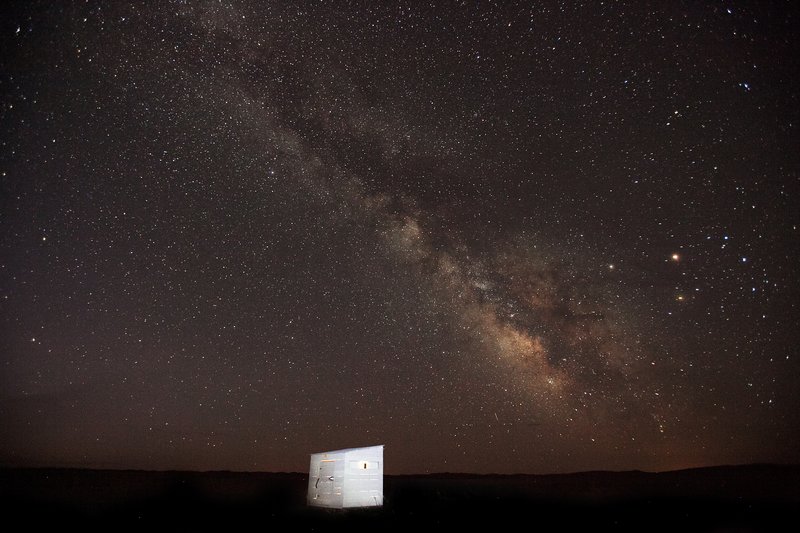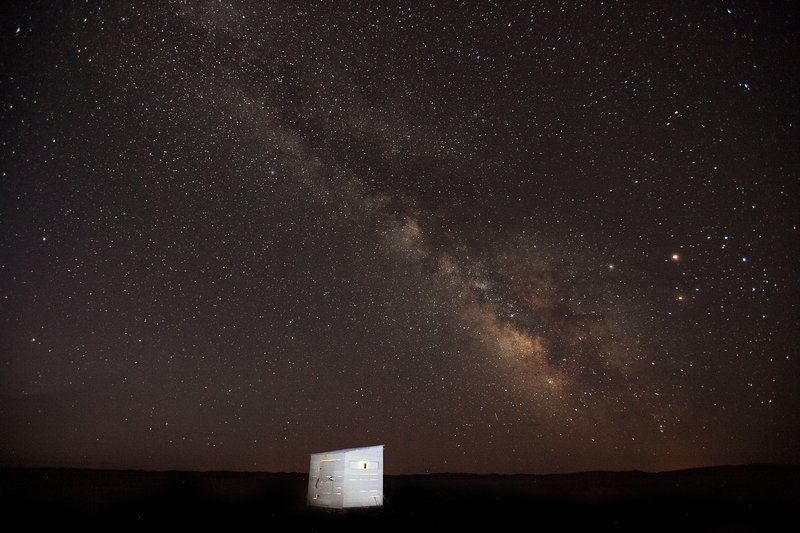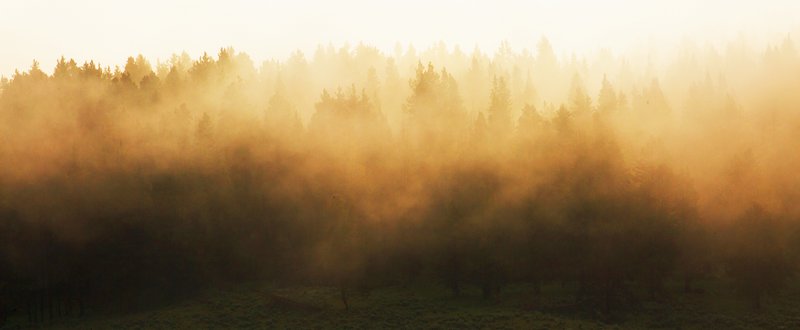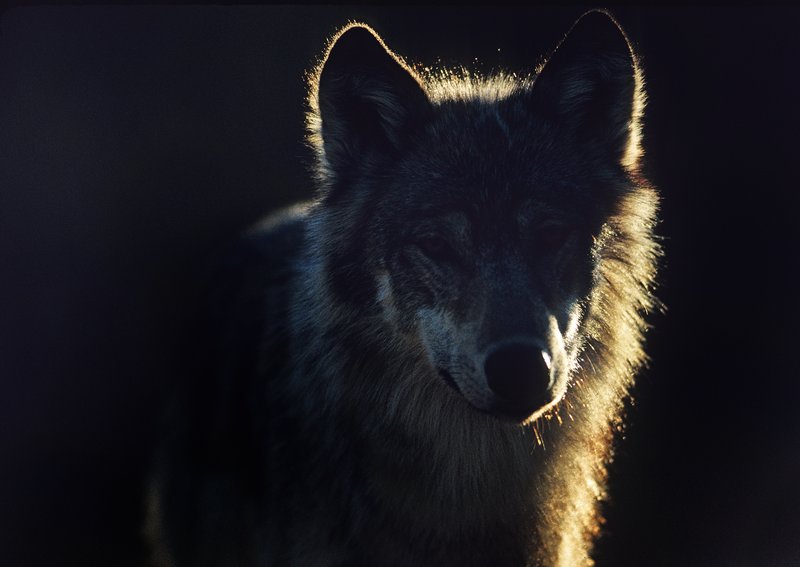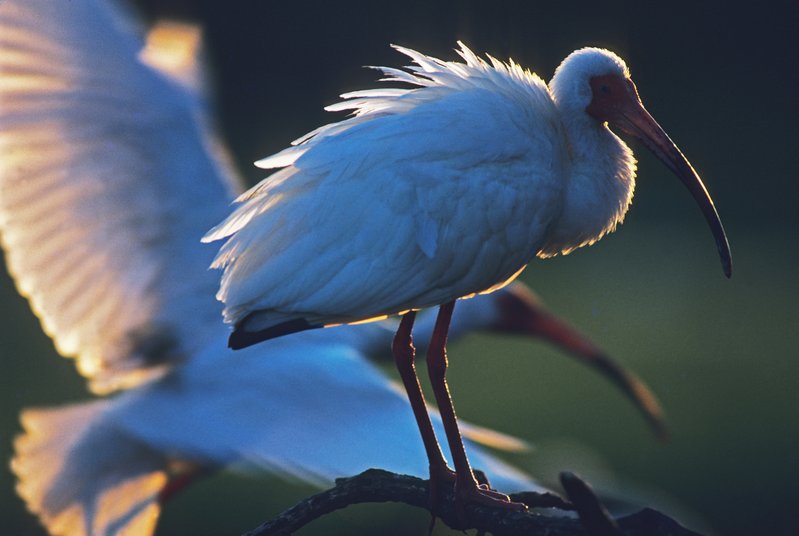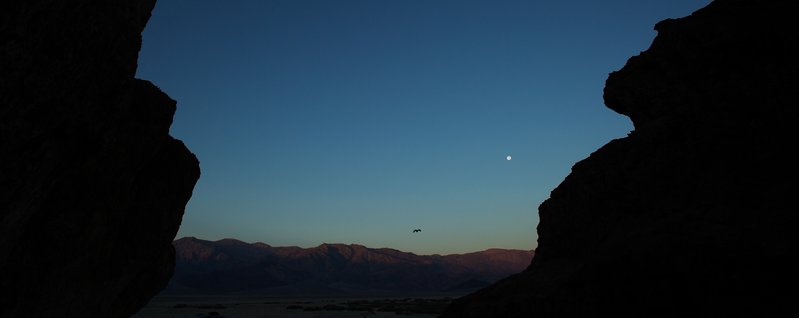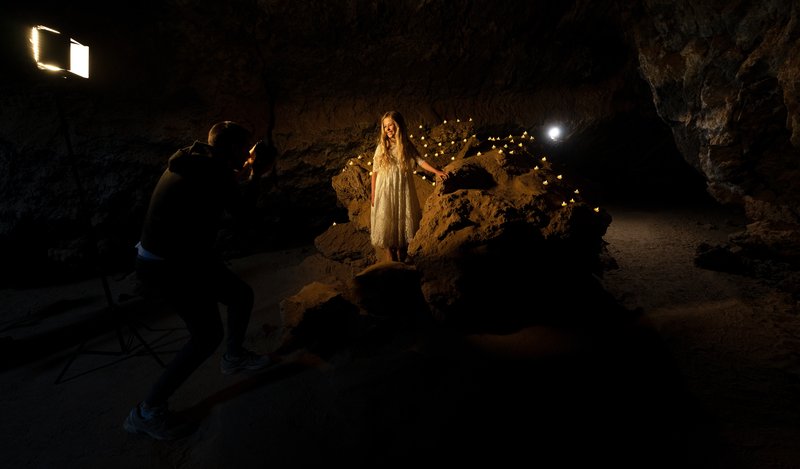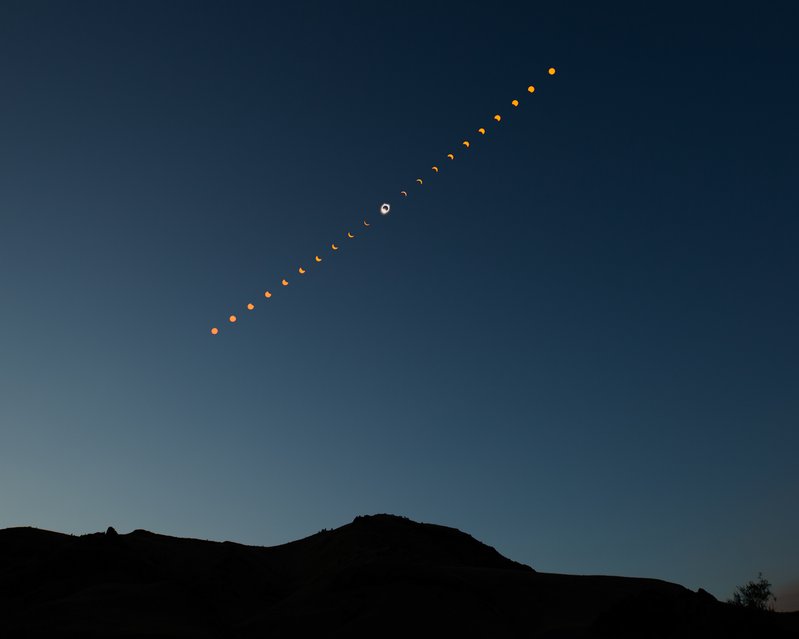Composite, The Great American Eclipse, Dayville, OR
This is a 22-exposure composite image of the 2017 Great American Eclipse from John Day Fossil Beds National Monument . It was a beautiful morning and we had three cameras set up. One for this composite, one on a telescope for full frame photographs and one for a shorter composite sequence directly before and after totality.
Exposures for this composite were approximately 7.5 minutes apart as the sun moved across the sky. With two people, three cameras, three tripods, three different focal length lenses and three solar filters that had to be attached, removed during totality and then re-attached. It was a fun time.
Dark Skies
Because of my background in photojournalism, I am often asked whether I believe there is a “decisive moment” in landscape and wildlife photography. For those who don’t know, the concept of the “decisive moment” was made famous by the late, great Henri Cartier-Bresson, who said, “There is nothing in this world that does not have a decisive moment.” In his words (and spellings), he wrote, “Photography is the simultaneous recognition, in a fraction of a second, of the significance of an event as well as of a precise organisation of forms which give that event its proper expression.”
My positive response to the question lies in the second half of his answer as composition is a critical element in all genres of photography. One difference between news photojournalism and environmental photography is contained in the famous photojournalism cliché “F8 and be there" often attributed to Arthur Fellis (WeeGee), the noted street photographer in New York circa 1930s & 40s. This philosophy is often echoed by my colleagues in the Natural Arch and Bridge Society when asked, “When is the best time of day to photograph a natural arch?” and their response, “When you are there.”
Of course, it is infinitely more complex than that response, which is always delivered with a smile, and to me, that complexity involves light. That is the commonality found in this grouping of photographs that depend on light more than anything else. Although there are not any photographs of sunrises or sunsets included, there are photographs that include the sun and the moon, sometimes even in the same photograph, and other photographs that rely on the first and last rays of morning and evening sunlight, reflected light and the rising and setting of the moon as a focal point of interest.
My best advice? Get up early, stay up late and nap in between.
